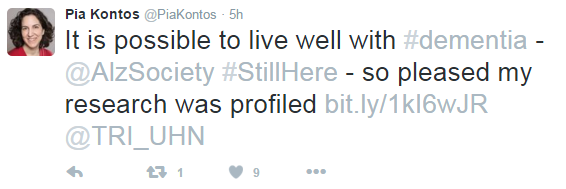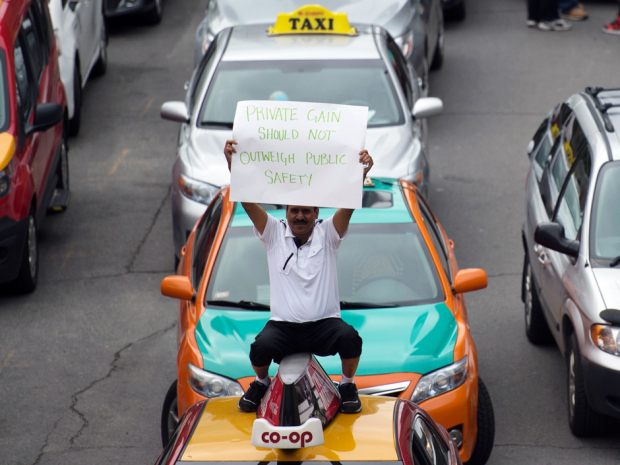Don’t Forget – Alzheimer Patients are #StillHere
It’s time to end the stereotypes surrounding ageing and disease.
It’s Alzheimer Awareness Month and the Alzheimer Society of Canada unveiled a special campaign today for those who are #StillHere.
The #StillHere social media campaign aims to end the stigma surrounding dementia – those who live with the illness can continue to engage in society.
What is dementia or Alzheimer’s?
Dementia and Alzheimer’s are not the same thing. According to the Alzheimer Society Of Canada, dementia is a general term that refers to a variety of brain disorders. Physical changes in the brain cause dementia. It is an umbrella term for symptoms caused by Alzheimer’s disease and other brain disorders. Alzheimer’s disease is the most common form.
Symptoms of dementia may include memory loss and difficulties with thinking, problem-solving or language, severe enough to reduce a person’s ability to perform everyday activities. A person with dementia may also experience changes in mood or behaviour.
Alzheimer’s disease is irreversible and destroys brain cells, causing thinking ability and memory to deteriorate. Each person is affected differently. It is difficult to predict symptoms, the order in which they will appear, or the speed of their progression.
How can #StillHere help?
Anyone affected by the disease can talk on Twitter with the hashtag #StillHere. It invites public participation to end the stigma.
The campaign is successful for a number of reasons:
- Being relevant. January is the month to really talk about stigmas of mental health in Canada. It is Alzheimer’s Awareness Month. This campaign is complementary to Bell’s annual #LetsTalk campaign regarding stigma surrounding mental illness on January 24th. Since the campaign’s beginning on January 5, it’s become a Canadian trending topic on Twitter:
2. Having a real person to engage the public.

The #StillHere spokesperson, Pia Kontos, is the real deal. A senior scientist at the Toronto Rehabilitation Institute, Kontos is familiar with how negative the stigma can be for those who have dementia or Alzheimer’s:
“People with dementia face discrimination and social rejection. Often they are ignored. People will address their care partner even when the person with dementia is standing right there. They may lose friends because of misconceptions about abilities,” said Kontos.
3. Call to action. It gives YOU the opportunity to help in three ways:

First, you can “Be a Friend” with Dementia Friends Canada with three easy steps.
Second, you can be informed of how these diseases work by taking the Alzheimer Society of Canada’s quiz here.
Third, you can be a supporter by joining the Walk for Alzheimer’s: Make Memories Matter.
End your fear of dementia
Not everyone should have to play victim. #StillHere gives a voice to those who are silenced by fear of mental illness.
“It’s disempowering this stigma,” Kontos said. “It’s demeaning and when they internalize that stigma, they edit themselves into silence for fear of being judged, so they themselves are disengaging and that has really detrimental consequences for quality of life and for their well-being.”
Phyllis Fehr of Hamilton, Ont., was interviewed by the CBC and discussed her dementia diagnosis. “Things go through your head,” Fehr recalled. “You kind of go, ‘Oh, what is my life going to be like? What do I have left with my life?’ and I would be the first person to admit, you kind of get a little depressed.”
Instead, of letting it get the best of her, Fehr took up archery to keep up with her hand/eye coordination and take part in social activities.
“I figured the more that I can do, the more I concentrate, the better things are going to be. This is something that I can do and do well.”

THE PR DR DIAGNOSIS:
Basically, people who live with dementia can still live a full, rich life. #StillHere aims to prove it.

































